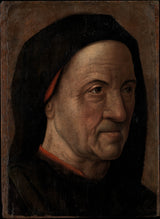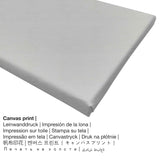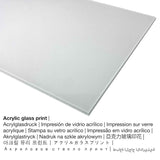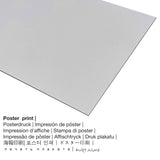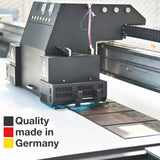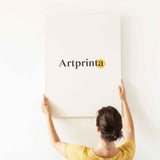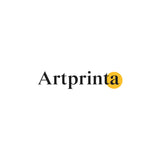Hugo van der Goes, 1470 - Foto nke nwoke ochie - mbipụta nka mara mma
Ụtụ gụnyere. Mbupu gbakọrọ na ndenye ọpụpụ.
Summary
Na narị afọ nke 15 a na-akpọ Eserese nke Nwoke Ochie e sere ya n'ebe ugwu renaissance onye na-ese ihe Hugo van der Goes. The 550 Mpempe nka dị afọ gbara nha: Overall 8 3/4 x 6 1/2 in (22,2 x 16,5 cm). Oil on paper, laid down on wood was used by the European painter as the technique for the masterpiece. The artwork is part of the art collection of Museumlọ ihe ngosi nka nke Obodo. The public domain artpiece is being supplied with courtesy of The Metropolitan Museum of Art, New York, Purchase, 2009 Benefit Fund, Hester Diamond Gift, Victor Wilbour Memorial Fund, Mary Harriman Foundation and Friends of European Paintings Gifts, Alfred N. Punnett Endowment Fund, Marquand and Charles B. Curtis Funds, and University Place Foundation Gift, 2010. Ebe kredit nke ọrụ nka: Purchase, 2009 Benefit Fund, Hester Diamond Gift, Victor Wilbour Memorial Fund, Mary Harriman Foundation and Friends of European Paintings Gifts, Alfred N. Punnett Endowment Fund, Marquand and Charles B. Curtis Funds, and University Place Foundation Gift, 2010. The alignment is in portrait format with a ratio of 1 : 1.4, meaning that the length is 29% shorter than the width. Hugo van der Goes was a male Netherlandish painter, whose artistic style can mainly be attributed to Northern Renaissance. The painter was born in the year 1467 in Ghent, East Flanders, Flanders, Belgium and passed away at the age of 15 n'afọ 1482.
Họrọ ụdị ebipụta nka kacha amasị gị
Na menu ndọpụta ngwaahịa ị nwere ike họrọ nha na ihe ị họọrọ. Anyị na-ahapụ gị ka ịhọrọ n'ime ụdị ndị a:
- Aluminom ihe eji eme ihe: Aluminium Dibond prints are prints on metal with an outstanding effect of depth. A direct Aluminium Dibond Print is your excellent start to the sophisticated world of art prints made with aluminum. For the Direct Aluminium Dibond option, we print the selected artwork right on the aluminium composite surface. The bright and white parts of the original artpiece shine with a silk gloss, however without any glare. The colors of the print are vivid and luminous in the highest definition, the details of the print appear crisp.
- Mbipụta iko acrylic na-egbuke egbuke: A glossy acrylic glass print, often described as a an art print on plexiglass, will transform the original into magnificient décor. Your own copy of the work of art is made with state-of-the-art UV direct print technology. It creates vivid, impressive print colors. The major upside of a plexiglass art print is that contrasts and also minor color details will be more recognizeable due to the very fine tonal gradation in the picture.
- Kwaaji: The canvas direct print is a printed canvas stretched on a wooden frame. How can I hang a canvas print on my wall? The great advantage of canvas prints is that they are relatively low in weight, which implies that it is easy and straightforward to hang the Canvas print without the support of additional wall-mounts. Therefore, a canvas print is suitable for any kind of wall.
- Akwụkwọ mmado na ihe kwaaji: The Artprinta poster print is a printed canvas with a nice surface finish. Please note, that depending on the absolute size of the poster we add a white margin of approximately 2-6 cm around the painting in order to facilitate the framing with your custom frame.
Legal disclaimer: We try everythig possible in order to describe our products as accurate as we can and to display them visually in our shop. Although, the pigments of the printed materials, as well as the imprint may diverge marginally from the presentation on the device's monitor. Depending on the settings of your screen and the quality of the surface, not all color pigments are printed as exactly as the digital version. Because all art prints are processed and printed manually, there might also be slight differences in the size and exact position of the motif.
Nkọwa ngwaahịa ahaziri ahazi
| Nkewa ngwaahịa: | nka nka |
| Usoro mmeputakwa: | dijitalụ mmeputakwa |
| Usoro mmepụta: | Mbipụta UV ozugbo (mbipụta dijitalụ) |
| Mmalite ngwaahịa: | emepụtara na Germany |
| Ụdị ngwaahịa: | mmepụta ihe na-achọ |
| A na-atụ aro iji ngwaahịa eme ihe: | nka mgbidi, gallery mgbidi |
| Ntuziaka onyonyo: | nhazi ihe osise |
| Njikwa oyiyi: | 1:1.4- ogologo: obosara |
| Ntụgharị nkọwa akụkụ akụkụ: | ogologo bụ 29% mkpụmkpụ karịa obosara |
| Ụdị ihe dị iche iche: | Mpempe akwụkwọ, akwụkwọ mmado (akwụkwọ kwaaji), mbipụta ọla (aluminium dibond), mbipụta iko acrylic (nwere ezigbo mkpuchi iko) |
| Ọdịiche dị n'okirikiri akwa akwa akwa (akwa akwa): | 50x70cm - 20x28", 100x140cm - 39x55" |
| Mbipụta iko acrylic (nwere ezigbo mkpuchi iko) nhọrọ nha: | 50x70cm - 20x28", 100x140cm - 39x55" |
| Mpempe akwụkwọ mmado (akwụkwọ kwaaji) nha: | 50x70cm - 20x28" |
| Mpempe aluminom (aluminium dibond ihe) nha: | 50x70cm - 20x28", 100x140cm - 39x55" |
| Nhazi mbipụta nka: | mmeputakwa na-enweghị isi |
Nkọwa nka ahaziri
| Akụkụ nka: | "Ihe osise nke agadi nwoke" |
| nhazi ọkwa: | sere |
| Okwu mkpokọta: | nka ochie |
| Time: | 15th narị afọ |
| Afọ okike: | 1470 |
| Ogologo afọ nka nka: | karịa afọ 550 |
| Ọkara nke ihe osise izizi: | mmanụ n'akwụkwọ, tọrọ n'elu osisi |
| Akụkụ nke nka nka izizi: | Overall 8 3/4 x 6 1/2 in (22,2 x 16,5 cm) |
| Ụlọ ihe ngosi nka: | Museumlọ ihe ngosi nka nke Obodo |
| Ebe ngosi nka: | New York City, New York, Njikota Obodo Amerika |
| Webụsaịtị ihe ngosi nka: | Museumlọ ihe ngosi nka nke Obodo |
| Ụdị ikike nka: | ngalaba ọha |
| Site n'aka: | The Metropolitan Museum of Art, New York, Purchase, 2009 Benefit Fund, Hester Diamond Gift, Victor Wilbour Memorial Fund, Mary Harriman Foundation and Friends of European Paintings Gifts, Alfred N. Punnett Endowment Fund, Marquand and Charles B. Curtis Funds, and University Place Foundation Gift, 2010 |
| Ebe E Si Nweta: | Purchase, 2009 Benefit Fund, Hester Diamond Gift, Victor Wilbour Memorial Fund, Mary Harriman Foundation and Friends of European Paintings Gifts, Alfred N. Punnett Endowment Fund, Marquand and Charles B. Curtis Funds, and University Place Foundation Gift, 2010 |
Tebụl onye na-ese ihe
| Aha onye nka: | Hugo van der Goes |
| Aliases: | Goes, Hugues Van-Der-Goes, van der Goes, Vander Goes, Hugues Vander Goes, Hugues Vander Goes eleve de Van Eyck, Hyges von der Goes, Hugues van der Does, Hugues Vander-Goes disciple de Jean de Bruges, Hugo Vander Goes, Van der Goes Hugo, Goes Hugo van der, Hugo van der Goes |
| Gender: | nwoke |
| Nationality: | Dutch |
| Ọrụ onye na-ese ihe: | Onye na-ese ihe na Netherlands |
| Obodo obibi: | mba netherland |
| Otu nka: | nna ukwu ochie |
| Ụdị nka: | Northern Renaissance |
| Ndụ: | 15 afọ |
| Afọ ọmụmụ: | 1467 |
| Obodo ọmụmụ: | Ghent, East Flanders, Flanders, Belgium |
| Nwuru: | 1482 |
© Nwebiisinka nke | Artprinta.com
Nkọwa mgbakwunye sitere na The Metropolitan Museum of Art (© - Ụlọ ihe ngosi nka nke obodo ukwu - www.metmuseum.org)
In this closely observed and sympathetic portrayal of an old man, special attention is given to how light models the subject’s wrinkled, time-worn face. This objective realism is characteristic of the paintings of Hugo van der Goes, especially those of the early 1470s. However, Hugo’s works do not include independent portraits, and additionally, the technique of oil on paper is relatively rare. The extremely tight cropping of the image, uniform brownish background, and absence of any projecting shadow from the head indicate that this portrait was made as a detailed preliminary study for inclusion in a larger painting.

